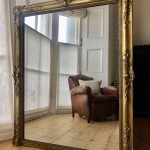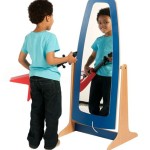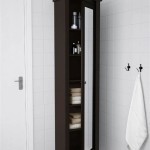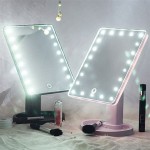How To Tell If A Mirror Is Two-Way With Your Phone
Two-way mirrors, often portrayed in movies and television, raise valid privacy concerns. These mirrors, appearing reflective on one side and transparent on the other, can be used for surveillance. Differentiating a standard mirror from a two-way mirror isn't always straightforward, but several methods, including using a smartphone, can assist in identification.
The Fingernail Test: A Basic Check
The fingernail test offers a quick, initial assessment. Place a fingernail against the reflective surface. If a gap exists between your fingernail and its reflection, it's likely a standard, second-surface mirror. However, if the reflection appears to touch the fingernail directly, with no discernible gap, the mirror could be a two-way mirror. This test isn't foolproof, as the quality and installation of the mirror can affect the results. Therefore, further investigation is recommended.
Using Your Smartphone's Flashlight: Illuminating the Difference
A smartphone flashlight can provide more conclusive evidence. In a dimly lit environment, shine the phone's flashlight directly onto the mirror's surface. If the mirror is two-way, the light should penetrate the glass and illuminate the space behind it. This test works on the principle that a two-way mirror is partially reflective, allowing some light to pass through. While this method offers greater accuracy than the fingernail test, it's not entirely infallible. Certain types of two-way mirrors or lighting conditions might yield ambiguous results.
Observing the Surroundings: Look for Inconsistencies
Careful observation of the environment can also offer clues. Two-way mirrors are typically installed as part of a wall, often within a concealed observation room. Look for any unusual features, such as wires, cameras, or small gaps in the wall surrounding the mirror. If the mirror appears unusually thin or if the wall seems oddly constructed, it could warrant further suspicion. Examine the overall layout of the room. Does anything look misplaced or suggest a hidden space?
The Sound Test: Listening for Clues
Sound can travel through thin walls and two-way mirrors. Try placing your ear against the mirror and gently knock on its surface. If you hear a hollow sound, similar to tapping on a thin wall, it could suggest a hidden space behind the mirror. A standard mirror, typically backed against a solid wall, will produce a duller, less resonant sound. This method, combined with other observations, can further solidify suspicions.
Smartphone Camera Test: Bypassing the Reflection
Modern smartphone cameras, particularly those with advanced light sensors, can sometimes "see" through the reflective surface of a two-way mirror. Turn off the flash and activate the camera. Place the phone's lens directly against the mirror surface, attempting to block out as much ambient light as possible. If the environment behind the mirror is illuminated, you might be able to capture an image of the space beyond the reflection. This method is more effective in low-light conditions, as excessive light can interfere with the camera's ability to penetrate the reflective surface.
Seeking Professional Assistance: When in Doubt
If suspicions remain after performing these tests, seeking professional assistance is advisable. Security consultants or law enforcement officials possess specialized equipment and expertise to definitively determine the nature of the mirror. They can also assess the surrounding environment for other potential surveillance devices. Reporting concerns to the appropriate authorities is essential if surveillance is suspected in a public or private space.
Understanding Limitations: No Method is Foolproof
While these methods provide valuable tools for identifying potential two-way mirrors, it's crucial to understand their limitations. No single test is entirely foolproof, and various factors, such as lighting conditions, mirror quality, and installation techniques, can influence the results. Employing a combination of these methods and considering the surrounding context is essential for a comprehensive assessment. If privacy remains a concern, exercising caution and seeking professional advice is always recommended.

How To Tell If A Mirror Is Two Way Or Not 8 Steps With Pictures

How To Detect A Two Way Mirror Fingernail Test

How To Tell If A Mirror Is Two Way Or Not Quora

How To Tell If A Mirror Is Two Way Or Not 8 Steps With Pictures

How To Tell If A Mirror Is Two Way Or Not 8 Steps With Pictures
How To Tell If A Mirror Is Two Way Or Not Quora

How To Tell If A Mirror Is Two Way Or Not 8 Steps With Pictures

How To Tell If A Mirror Is Two Way Or Not 8 Steps With Pictures

How To Tell If A Mirror Is Two Way Or Not 8 Steps With Pictures

How To Tell If A Mirror Is Two Way Or Not 8 Steps With Pictures








